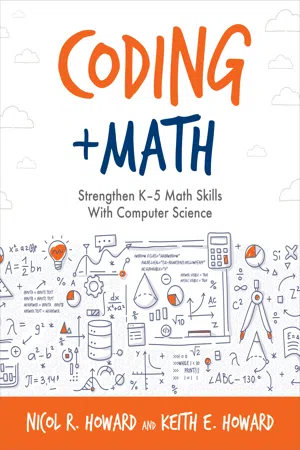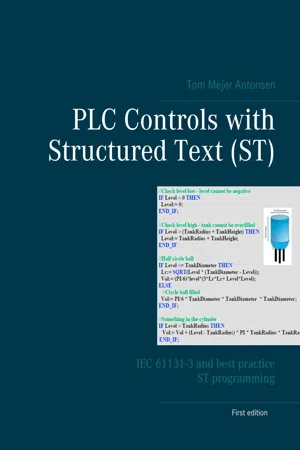Java If Statements
Java if statements are used to make decisions in a program based on a condition. They allow the program to execute certain code if the condition is true, and optionally execute different code if the condition is false. If statements are fundamental to controlling the flow of a Java program and are essential for creating logic and decision-making processes.
4 Key excerpts on "Java If Statements"
- eBook - ePub
Coding + Math
Strengthen K–5 Math Skills With Computer Science
- Nicol R. Howard(Author)
- 2020(Publication Date)
...Example one is the simplest of the if statements, and it would only run the code between the curly braces if the condition evaluated to true; otherwise, the program would just continue to the next code below it. Example two runs the code below the if statement if the condition is true, but runs the code below the else statement if the condition is false. In example three, if condition one is true, the program will run the code under the if statement; if not, it will test for condition two, and if true, it will run the code under the else-if statement. If neither condition one nor condition two are true, it will run the code under else. Note that one and only one of the code blocks will be executed. Finally, example four adds multiple else-if statements and operates the same way as the previous example, as only one of the four code blocks will be executed. You can string together as many else-if statements as you like, each with its own condition. Learning how to use these statements, particularly in the context of programming toward a particular outcome, goes a long way in developing students’ ability to sequence and to apply logic to scenarios with predictable outcome options. Math learning is strengthened when the Boolean statements used in the conditions are based upon mathematical equations being evaluated as true or false. With this approach, the math is no longer arbitrary (as it may sometimes seem in common math exercises), but is essential to achieving a specific programming goal. Given the accepted and expected process of debugging that is part of the programming culture, learners can test their answers by running their program without any evaluation-based affect involved...
- George Pruitt, John R. Hill(Authors)
- 2012(Publication Date)
- Wiley(Publisher)
...But, remember back in Chapter 1 when we discussed the precedence of operators and how parentheses can change their order. In this example, we have True and (False or True), which reduces down to True and True. We first evaluate the information inside the parentheses and then do the next comparison. Inside the parentheses, we have False or True, which is True. We then compare True and True; and as we all know, this is True. The if-then statement is the simplest form of conditional branching. This statement causes the program to execute a single statement or a block of code if a condition is True. When the compiler first encounters an if-then statement, it evaluates the information that is provided by the conditional statement. The evaluation produces one of two possible results—True or False. If the statement is True, the line or block of code immediately following the if-then is executed. If the result is false, the program skips the line or block entirely. The if-then construct has the following syntax (syntax is the body of rules governing which statements and combinations of statements in a programming language will be acceptable to a compiler for that language): if(conditional statement) then [single statement]; if(conditional statement) then begin [multiple statements] end; You must always include the word “then” after the if conditional statement. The parentheses around the conditional statement(s) are optional, but they do help in clarification. If you want more than one statement to be executed after a conditional branch, you must use the words “begin” and “end.” “Begin” marks the beginning point of the block of code, and “end” literally marks the end of the block of code...
- eBook - ePub
- Bill Sempf, Charles Sphar, Stephen R. Davis(Authors)
- 2010(Publication Date)
- For Dummies(Publisher)
...When I say “make decisions,” I mean that the processor sends the flow of execution down one path of instructions if a condition is true or down another path if the condition is not true. Any programming language must offer this fundamental capability to control the flow of execution. The three basic types of flow control are the if statement, the loop, and the jump. (I describe one of the looping controls, the foreach, in Chapter 6 of this minibook.) Branching Out with if and switch The basis of all C# decision-making capability is the if statement (and the basis of all my decisions is the maybe): if (bool-expression) { // Control goes here if the expression is true. } // Control passes to this statement whether the expression is true or not. A pair of parentheses immediately following the keyword if contains a conditional expression of type bool. (See Chapter 2 of this minibook for a discussion of bool expressions.) Immediately following the expression is a block of code set off by a pair of braces. If the expression is true, the program executes the code within the braces; if the expression is not true, the program skips the code in the braces. (If the program executes the code in braces, it ends just after the closing brace and continues from there.) The if statement is easier to understand by looking at a concrete example: // Make sure that a is not negative: // If a is less than 0. . . if (a < 0) { //. . . then assign 0 to it so that it’s no longer negative. a = 0; } This segment of code ensures that the variable a is nonnegative — greater than or equal to 0. The if statement says, “If a is less than 0, assign 0 to a.” (In other words, turn a into a positive value.) The braces aren’t required. C# treats if(bool-expression) statement; as though it had been written if(bool-expression) {statement;}. The general consensus (and my preference) is to always use braces for better clarity...
- eBook - ePub
PLC Controls with Structured Text (ST)
IEC 61131-3 and best practice ST programming
- Tom Mejer Antonsen(Author)
- 2018(Publication Date)
- Books on Demand(Publisher)
...9 Conditional Statement The following chapter consists of the central statement concepts in ST. In the general format descriptions, <Condition> and <Statement> must be replaced by variables, expressions and PLC codes 9.1 IF-THEN-ELSE An IF-THEN-ELSE statement – or a sentence – is the most used expression in ST programming. An IF statement can e.g. be used to control whether a digital sensor shows a signal (e.g. an electrical start contact, an ON/OFF switch or a level contact in a pump well). If the digital sensor shows a signal, an action is to be taken, being e.g. starting a pump or switch on a lamp. An IF statement can be used both when using analogue and digital input-signals. Further, the IF statement can be used for internal variables. The general format of the IF statement is as follows: IF <Condition> THEN <Statement> END_IF ; Where: <Statement> = Can contain one or more lines of PLC code, always ended by END_IF and semicolon. <Condition> = An expression, always being TRUE or FALSE. If the expression is true, the PLC code in <Statement> is carried out. <Condition> can e.g. be an input signal from an electrical contact and <Statement> can be an output signal to switching on or off a lamp. The statement ELSE can be added to the expression: IF <Condition> THEN <Statement> ELSE <Statement1> END_IF ; As can be seen, the ELSE part is optional and notice that the lines including <Statement> is tabulated (2 x blanks) to make the whole expression more readable. The mode of operation is as follows: If <condition> is fulfilled (TRUE), the PLC code in <Statement > will be carried out. If <condition> is not fulfilled (FALSE), the PLC code in <Statement1> is carried out. Flowchart of the IF-ELSE statement NOTICE: If <Condition> section contains colon “:”, it indicates that it is controlled if the variable assignment is carried out well, which is not the intention! Therefore, remember that the sign “=” must stand alone. It is...



